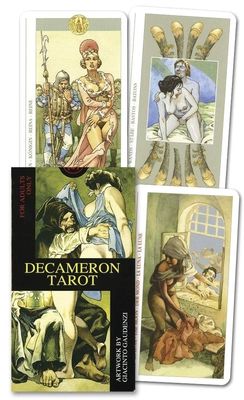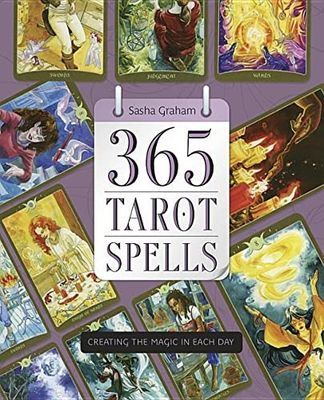Witchcraft supplies and wicca supplies online from one of the USA's BEST pagan stores! WINTER SALE NOW ON! USE COUPON CODE "DARKARTES" FOR 20% OFF SITEWIDE!!!
Hoodoo Tarot: 78-Card Deck and Book for Rootworkers
$33.00
The Hoodoo Tarot is a 78-card deck centered in Hoodoo traditions, reflecting the needs and interests of Rootworkers. It celebrates an often misunderstood aspect of Black/Indigenous culture in North America.
In stock: 1 available
Product Details
UPC: 9781620558737
Brand: Microcosm
Tags: Tarot,divination,hoodoo,rootwork
A divination deck and guidebook rooted in the American Hoodoo tradition
• 2021 Coalition of Visionary Resources Silver Award
• Includes 78 full-color Tarot cards that depict legendary rootworkers past and present as well as important Hoodoo archetypes and symbols
• Provides in-depth card meanings for each card in the Major Arcana and the four suits of the Minor Arcana, including the history of the rootworker or symbol featured, any associated magical plants, and guidance based on the card’s meaning
• Offers a history of Hoodoo and its complex heritage, including its roots in multiple African and Native American ethnic groups as well as its European influences
Between the 17th and 19th centuries, many Indigenous Americans and people of African descent intermarried and socialized more often than is acknowledged by mainstream history books and scholars. These interactions produced not only a multicultural people but also a body of knowledge that is known today as Hoodoo or Rootwork.
Celebrating the complex American Rootwork tradition, The Hoodoo Tarot integrates esoteric and botanical knowledge from Hoodoo with the divination system of the Tarot. Structured like a traditional Tarot deck, each of the 78 cards features full-color paintings by magical-realist artist Katelan Foisy and elegantly interprets the classical Tarot imagery through depictions of legendary rootworkers past and present as well as important Hoodoo symbolism.
In the accompanying guidebook, Tayannah Lee McQuillar provides a history of Hoodoo and its complex heritage, including its roots in multiple African and Indigenous American ethnic groups as well as its European influences. She explores the traditional forms of divination used by rootworkers, including cartomancy, explaining how pairing the Tarot with Hoodoo is a natural fit. For each card in the Major Arcana and the four suits of the Minor Arcana (sticks, baskets, needles, and knives), McQuillar provides an in-depth card meaning that draws on both Tarot and Hoodoo tradition. She shares the history of the rootworker or symbol featured, any associated magical plants, a related scriptural quote, and guidance and advice based on the card’s meaning. She also offers instructions on card spreads and shares sample card readings.
Offering a divination system rooted in the Indigenous and African experience in North America, The Hoodoo Tarot provides a hands-on way to honor and explore the magic of Hoodoo for personal growth and spiritual inspiration.
Hoodoo Tarot Review
The Hoodoo Tarot is a 78 card deck by Tayannah Lee McQuillar, and illustrated by Katelan V Foisy. McQuillar’s first book ‘Rootwork: the Folk Magic of Black America’ described Hoodoo as ‘folk magic’, an error which she emphatically corrects on the first page of her guidebook. Hoodoo is a culture, a body of distinct knowledge and information, a rejection of white supremacy in all its forms, and an affirmation of inherited knowledge and information. Hoodoo is a rich amalgam of magic, religion, and herbal wisdom from many cultures – predominantly African, Native American, Indian, and European. Many other cultures came to America as slaves or indentured servants, and their knowledge too has fed into Hoodoo and Rootwork. It is important to establish this information here so that you understand the construction of the deck and information that this tarot imparts. This is a complex deck which calls upon many aspects of Hoodoo culture to inform the Seeker, guide them, and answer their questions.
The Hoodoo Tarot does set out to achieve certain objectives which I will briefly summarise:
- it aims to pay homage to Hoodoo practitioners and Rootworkers
- to take into consideration contributions made by “North America’s interethnic spiritual and intellectual heritage”
- to demonstrate the unique qualities of Hoodoo as distinct from Voodoo; acknowledge sacred sites, the flora, fauna, and other natural phenomena from America’s Southeast
- and increase awareness of the fact that both Black and Indigenous history are inextricably intertwined due to shared experiences and bloodlines.
The Hoodoo Tarot takes a traditional approach to it’s composition, and is loosely based on the Rider-Waite – Smith deck, but it also has significant departures which give it a unique identity. The Hoodoo Tarot is structured around the concept of extended family with the Major Arcana representing The Elders, while The Family is represented by Court cards, and the broader Community is illustrated in the number cards of the Minor Arcana.
This fully illustrated 78 card deck has both a Major and Minor Arcana featuring the traditional divisions – 22 Major Arcana, and 56 Minor Arcana. Most of the Major Arcana have been renamed, but still retain significant links to the traditional tarot structure and its meanings.
This is in line with moving away from predominantly white/ Anglo-European titles and identities – The Fool becomes The Free Man, Black Herman is The Magician, Miss Ida is The High Priestess, The Big Queen is The Empress, John Horse is The Emperor, Bishop CH Mason is The Hierophant, Courting is The Lovers, Railroad Bill is The Chariot, Strength is the only card that retains its original name, Dr Grant is The Hermit, Aunt Caroline is The Wheel of Fortune, Dr Buzzard is Justice, Gullah Jack is The Hanged Man, Ancestors is Death, Father Simms is Temperance, Miss Robinson is The Devil, The Big House is The Tower, The Grandchildren is The Star, PA is The Moon, Big Mama is The Sun, Dem Bones is Judgement, and finally, The Garden is The World.
The Minor Arcana is divided into four suits of 14 cards each, with 10 number cards and 4 Court cards in each suit. The suits are Sticks (Wands), Baskets (Cups), Knives (Swords), and Coins (Pentacles) – implements and tools which are workaday objects recognised by most cultures, but which also have esoteric significance to Hoodoo, and Rootworkers.
The Court cards are Mother, Father, Daughter, and Son – an interesting inversion of the usual Court structure, where the King/Father is generally implied to be the head of the household. The impression given in the Hoodoo Tarot is of strong equals each ruling their respective domains.
The cards measure 117 x 71 mm – which puts them well within the standard size range for tarot cards. They are of course both broader and longer than a deck of playing cards, but not so outsized that they can’t be handled easily.
The card stock is good, light and reasonably flexible, without being flimsy, or in danger of bending, creasing or snapping if you shuffle your cards with a heavy hand. The deck is rather compact to hold, in contrast with some decks which are significantly bulky due to the heaviness/density of the card. The finish is low gloss and untextured – the cards do not stick together, rather they flow smoothly and are very easy to shuffle. The print quality is excellent – the subtleties of the images are clearly reproduced, without colour bleeds, without blurring or misprints.
Save this product for later
Hoodoo Tarot: 78-Card Deck and Book for Rootworkers
You May Also Like
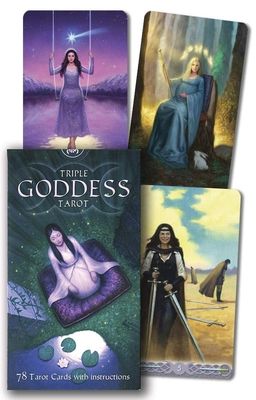
TRIPLE GODDESS TAROT (78-card deck & instruction booklet)
The lush artwork perfectly captures the deep magic of the feminine divine. Following the energies of the phases of the moon, this deck provides insights into the cyclical nature of the challenges and uncertainties that dawn in our lives.
TRIPLE GODDESS TAROT (78-card deck & instruction booklet)
$23.95

MUCHA TAROT (78-card deck, instruction booklet & box with removable cover)
An extraordinary tribute to art nouveau pioneer Alphonse Mucha, this deck embraces the fresh beauty of the dawning of the twentieth century along with the eternal wisdom and understanding of the tarot.
MUCHA TAROT (78-card deck, instruction booklet & box with removable cover)
$26.95
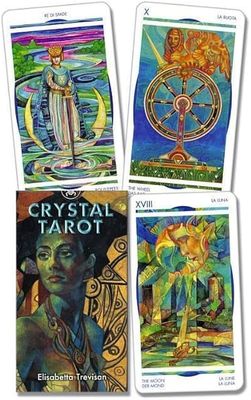
Crystal Tarot - Trevisan, Elisabetta|Scarabeo, Lo|Tervisan, E. - Cards
As rich and complex as life itself, the Crystal Tarot blends the look of stained glass with art nouveau style to gracious effect. The use of patterns within patterns gives depth to the traditional pictures of the Tarot.
Crystal Tarot - Trevisan, Elisabetta|Scarabeo, Lo|Tervisan, E. - Cards
$21.95
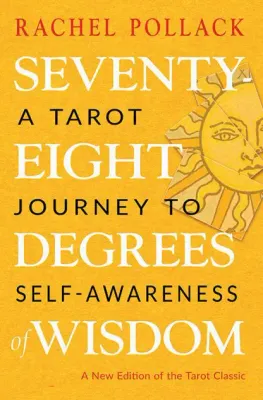
Seventy Eight Degrees Of Wisdom
A CLASSIC!! The best book ever written on the modern esoteric Tarot and how to use it. Easy to read and enjoyable, witches will learn the history of the Tarot, the rich occult symbolism behind the images. One of our Essential Witchcraft titles.
Seventy Eight Degrees Of Wisdom
$20.95
Display prices in:USD

